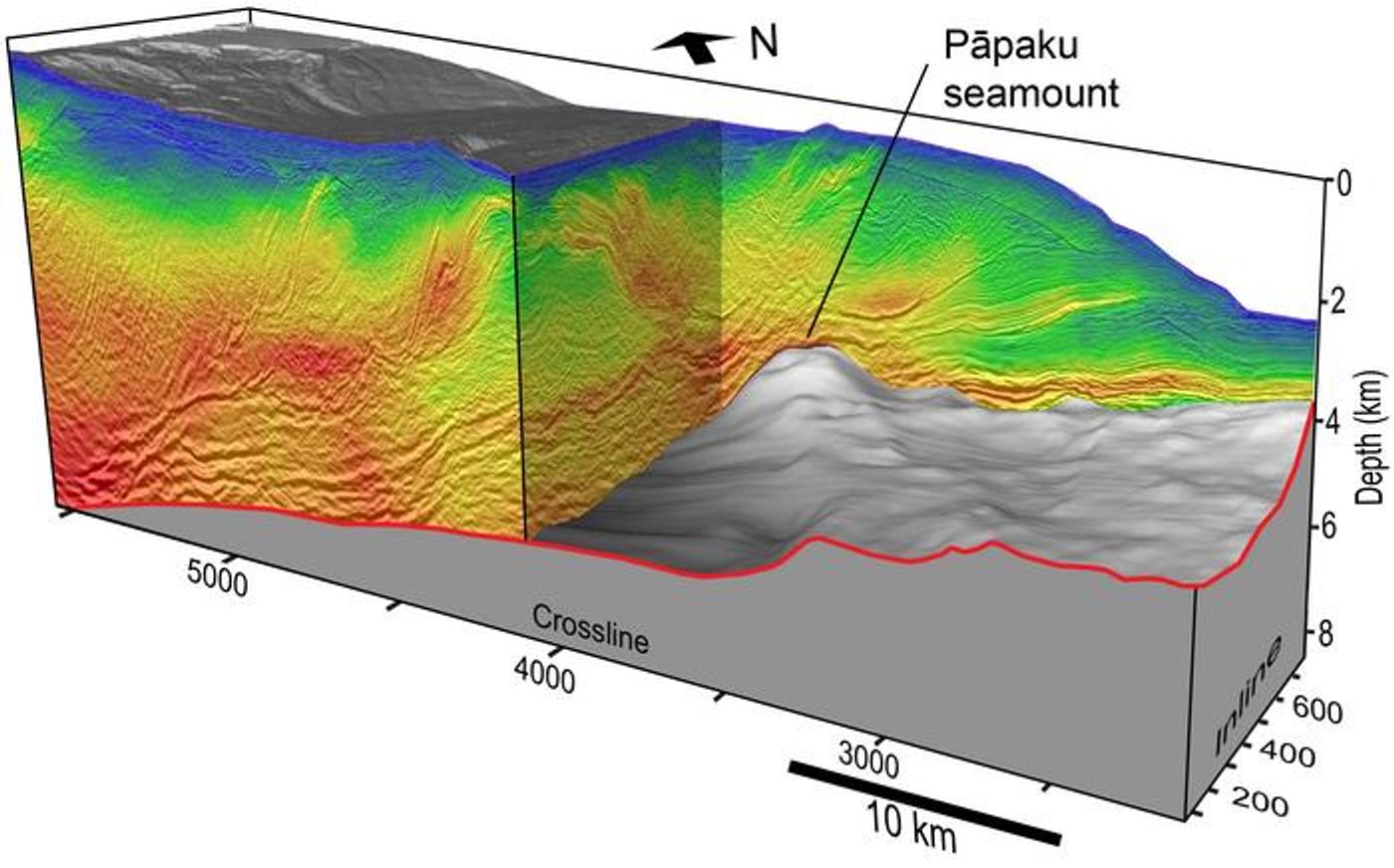Slow Slip Earthquakes Likely from Sinking Seafloor Mountains and Volcanoes
A recent study published in Nature Geoscience examines how seafloor mountains and volcanoes—also known as seamounts—that sink beneath subduction zones could result in the slow escape of tectonic pressure, allowing for smaller earthquakes to occur rather than large earthquakes. This study holds the potential to help scientists better understand the geologic processes behind earthquakes and how subduction zones could be studied going forward.
This study builds off a 2018 investigation where lead author, Dr. Nathan Bangs, led a team who produced the first ever 3D scan of a seamount slipping beneath a subduction zone. In this case, they scanned the Pāpaku Seamount, which is a long-dormant volcano off the coast of New Zealand, as it slipped beneath the Hikurangi subduction zone.
Image from the 2018 investigation where the researchers conducted a 3D scan of New Zealand’s Hikurangi subduction zone. (Credit: University of Texas Institute for Geophysics/Nathan Bangs)
For this most recent study, the team used these scans to not only observe the seamount crashing into the subduction zone and the processes that resulted from it, but they also observed remnants of a much older seamount that had gone beneath the subduction zone long ago. Dr. Bangs suggests these findings indicate this activity results in slow slip earthquakes, at least at this location in New Zealand.
Cutaway 3D seismic image of Pāpaku Seamount (center, grey). (Credit: University of Texas Institute for Geophysics/Nathan Bangs)
“That older one seems to be very much linked to an uplifted ridge that's really in the bullseye of where recent slow slip activity has been,” said Dr. Bangs, who is a senior scientist at the University of Texas Institute for Geophysics. “There could be other places like Cascadia (in the U.S. Pacific Northwest) that have subducting seamounts and a lot of sediment, but because the subducting crust there typically has less water than Hikurangi, they may be less likely to have the same kind of shallow slow slip activity.”
Credit: University of Texas Institute for Geophysics
Slow slip earthquakes, also called slow motion earthquakes, release vast amounts of tectonic pressure slowly rather than in one big force. These slow releases are estimated to take days to weeks to release all its pressure, whereas much larger earthquakes last less than a minute. Researchers hypothesize the composition of the Earth’s crust is a primary driver in determining what type of earthquake results. More specifically, softer, wetter rocks allow the slow slippage of plates, whereas drier, brittle rocks result in massive build-ups of pressure.
Dr. Bangs said the study’s findings not only unveil the conditions that result in either type of earthquake but also what scientists should focus on when examining subduction zones in the future.
What new discoveries will scientists make about slow slip earthquakes in the coming years and decades? Only time will tell, and this is why we science!
Sources: Nature Geoscience, National Oceanic and Atmospheric Administration, IEDA, Jackson School of Geosciences, Wikipedia
As always, keep doing science & keep looking up!











